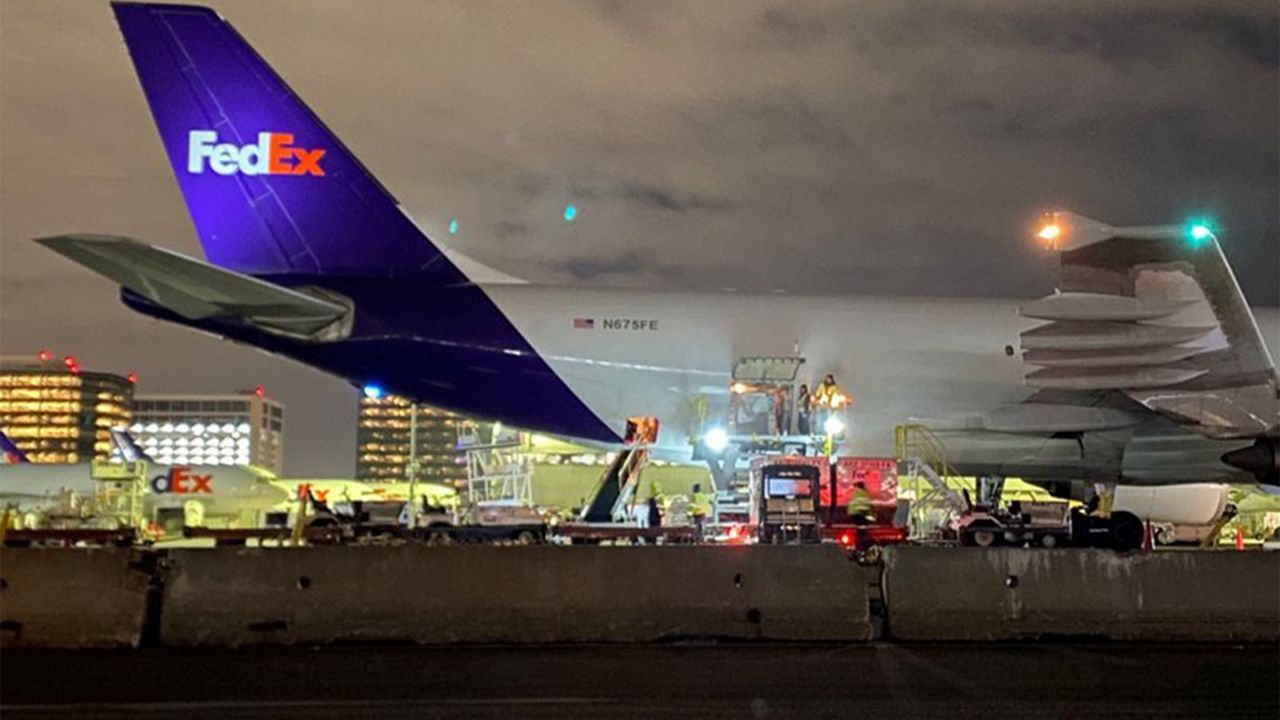LOS ANGELES (AP) — The first shipment of COVID-19 vaccine has arrived in Los Angeles County, which again broke a record for coronavirus hospitalizations this weekend as San Francisco County reported its highest number of COVID-19 cases since the pandemic began.
Statewide, more than 30,000 confirmed coronavirus cases were reported Sunday, making California’s total at 1,551,766. Millions of Californians in the majority of the state are under stay-at-home orders.
In Los Angeles County, the nation’s most populous, more than 4,000 people were hospitalized for COVID-19, according to figures released Sunday afternoon. More than one-fifth of hospitalized patients are in intensive care units.
The county’s new figures break the previous record set only the day before, with 3,850 patients in a hospital, and follows the trend of hospitalizations increasing nearly every day since Nov. 1.
LA County Health Director Barbara Ferrer warned on Monday — when hospitalizations were 2,988 — that the county could see the statistic to climb to 4,000 within two weeks. It happened in six days.
In San Francisco County, health officials reported 323 new cases on Saturday, the highest number of new coronavirus infections there yet. San Francisco emerged as a leader in the state’s response to the pandemic early on but has since moved to battling its own cases.
The record-breaking figures in Los Angeles and San Francisco counties come as more than 325,000 doses of a COVID-19 vaccine are on the way to California.
The first shipments of the Pfizer vaccine left Michigan early Sunday for 145 distribution centers nationwide. States will get vaccines based on their adult population and additional shipments are coming this week.
The vaccine is heading to hospitals and other sites across the country that can store it at extremely low temperatures — about 94 degrees below zero. Pfizer is using containers with dry ice and GPS-enabled sensors to ensure each shipment stays colder than the weather in Antarctica.
In California, counties will have specific allotments that will be distributed to hospitals determined by state health officials to have adequate storage capacity, serve a high-risk health care population and have the ability to vaccinate people quickly. Priority will be to inoculate health care workers on the front lines of a pandemic that has infected more than 16 million people and claimed nearly 298,000 lives in the U.S. alone.
Represented in those U.S. deaths include a disproportionate number of people of color.
In Santa Clara County in Northern California, volunteers have begun a door-to-door coronavirus testing pilot program in a majority Latino community that has become a virus hot spot. Officials started handing out self-testing kits in the East San Jose neighborhood of Silicon Valley’s San Jose last week, where 55% of the population is Latino and officials say many residents cannot easily access testing sites.
But for many, the vaccines are still out of reach. The priority will be for health care workers to be inoculated first.
Gov. Gavin Newsom tweeted that a group of medical experts convened by Western states met Saturday to discuss the vaccine and confirm that it is safe for public use. Newsom said distribution could begin as early as Sunday.
Medical facilities at military bases in Alameda and San Diego will be among the first sites to receive vaccines, the U.S. Department of Defense announced earlier this month.
The vaccines are coming as the situation grows more dire by the day nationwide and in California, with the holiday season well underway. Public health officials are afraid the already surging infection rates and hospitalizations will continue to climb as people ignore precautions to gather for the holidays.
On Saturday, the number of available ICU beds in San Joaquin Valley plummeted to zero for the first time.



